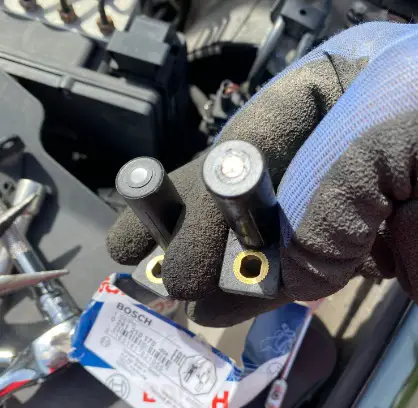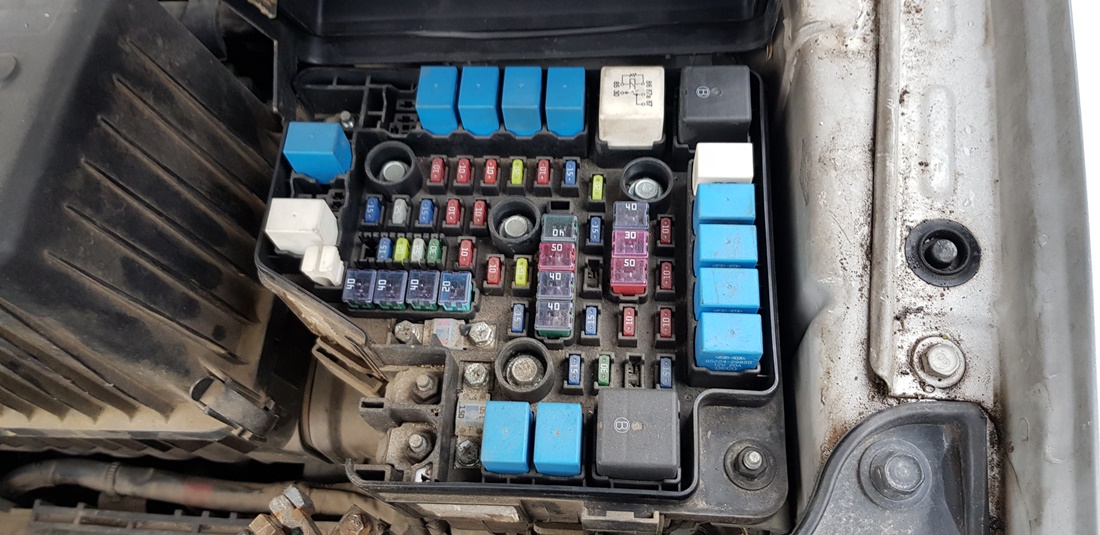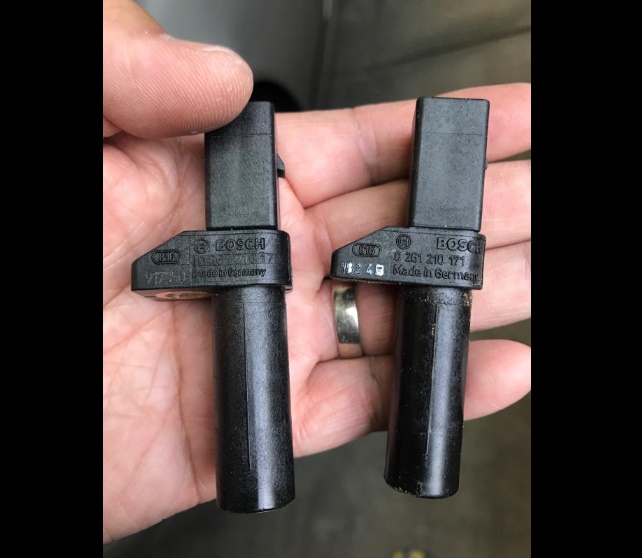Have you ever wondered how the cold weather is affecting your diesel vehicle? You have noticed that your diesel vehicle is performing differently in warm and cold weather.
But how cold is too cold for a diesel truck? Why is your diesel car hard to start when it’s cold?
Key Takeaway
- It’s generally considered too cold for a diesel truck when the temperature drops below 15°F (-9.5°C), as this can cause the diesel fuel to gel or solidify, potentially disrupting normal fuel flow and causing difficulties in starting the engine or hindering its performance.
- Signs that it’s too cold for a diesel truck include difficulty starting, loss of power or efficiency, unusual engine noises, white smoke emission, engine warning lights, issues with the fuel filter, and poor throttle response.
- It is bad to run a diesel truck cold as not allowing the engine ample time to warm up before driving can make it work harder than necessary, potentially leading to problems later on.
How Cold is Too Cold For a Diesel Truck?

The diesel fuel in your fuel tank will become like gel at a temperature of 15 Fahrenheit or -9.5 Celsius and you will have trouble starting your engine. Anything below 15 Fahrenheit / -9.5 Celsius can and will cause problems for your diesel vehicle.
The diesel won’t be solidly frozen, but it will not be in liquid form. You now have to rely on heating options like block heaters and glow plugs which not all diesel vehicles have.
There is a lot of speculation going on about how cold is too cold for a diesel truck. You can find information on the internet that the freezing point of diesel fuel is around -112 Fahrenheit or -80 Celsius. Now, you think that you will never be in an area where it gets that cold and you should be good to go. Wrong.
The diesel in your fuel tank and fuel lines doesn’t have to be solid frozen to cause you trouble. At temperatures below 15 Fahrenheit / – 9.5 Celsius, the diesel fuel starts to change its form and it is becoming more like a gel.
Imagine a fuel in the shape of a gel getting from the fuel tank into the engine. It would be hard to travel through the fuel lines and you will have trouble starting your engine in cold winter.
Then there are the impurities in the diesel, like water. As we all know, water freezes at 32 Fahrenheit or 0 Celsius. We also know that there shouldn’t be water in our diesel fuel. But, somehow all of our diesel has a small percentage of water in it.
The diesel can get contaminated with water due to condensation and handling. The thing is that diesel fuel tanks have no vapor pressure to displace the air coming from condensation. So, when it’s hot, the air expands and it is forced out. Now that you know how cold is too cold for a diesel truck, let’s move on.
Signs That It’s Too Cold For a Diesel Truck
- Difficulty Starting
- Loss of Power or Efficiency
- Unusual Noises
- White Smoke
- Engine Warning Lights
- Fuel Filter Issues
- Poor Throttle Response
Is It Bad To Run a Diesel Truck Cold?
Yes, it can be harmful to run a diesel truck when it’s cold. Diesel engines, like all internal combustion engines, rely on certain operating temperatures for optimal performance and longevity.
When a diesel engine is cold, the combustion process may not function as efficiently, potentially leading to incomplete fuel burn.
This can result in a build-up of carbon deposits, increased wear and tear, lower fuel efficiency, and potentially more emissions.
Additionally, the oil in a cold engine is more viscous and doesn’t circulate well, which can lead to inadequate lubrication. It’s generally recommended to let a diesel engine warm up for a few minutes before driving.
Why is My Diesel Car Hard To Start When It’s Cold?
If you know anything about how diesel engines work, you know they operate by taking in the fresh air, compressing it until it heats up, and then injecting the diesel fuel to combust and then ejecting the exhaust gases.
Because diesel engines operate this way, there is a certain limit as to how hot the air can actually get after compression. The colder the air is, to begin with, the less hot it’s going to be after the compression occurs. In some instances, especially during winter, the air is too cold to start with that it simply cannot ignite the diesel fuel.
As a result, diesel engines utilize glow plugs to help start the engine whenever it’s cold outside. The glow plugs act as a miniature space heater inside the cylinder. Electricity is sent to the glow plug and it heats up the air inside so that combustion can occur. Once the engine gets to an operating temperature, the glow plugs shut off and it runs as normal.
If your glow plugs fail, it would be hard to start your vehicle. Even if your glow plugs work fine, it takes a little bit of time for them to heat up the air so you can start your engine. So, if it takes you a little bit of time to start your vehicle when it’s cold, know that the glow plugs take time to heat up the air.
Do Diesel Engines Like The Cold?
Diesel engines do not particularly like the cold. They are harder to start in cold weather because they depend on high temperatures created by compression to ignite the injected fuel.
When temperatures drop below freezing, diesel-powered vehicles can struggle just like their gasoline-powered counterparts.
The diesel fuel can become gel-like at a temperature of 15ºF or -9.5ºC, causing difficulties in starting the engine. Modern diesel engines, however, have been designed to start in cold weather with minimal effort.
Despite these challenges, there are measures you can take to start diesel engines in cold weather, including the use of glow plugs, block heaters, and fuel additives.
What Is The Lowest Temperature For Diesel?
Diesel fuel has the potential to gel or solidify when temperatures drop below 32 degrees Fahrenheit, but diesel gelling can occur at very cold temperatures below 10°F (-12°C), disrupting the normal flow of the fuel.
The exact temperature at which gelling happens can depend on the specific composition and quality of the diesel fuel used.
This phenomenon is a major concern in cold weather because it can cause engine issues or prevent the vehicle from starting. To prevent this, anti-gel additives can be used to lower the freezing point of diesel fuel.
How To Prepare Your Vehicle For The Winter
All vehicles perform differently in warm and cold weather. The vehicles tend to have more issues when it is cold. There are some steps that you can take to get prepare your vehicle for the cold winter.
1. Replace your fuel filter

The most common cause of no starts and engine stalls in winter months is a clogged fuel filter. A fuel filter that is loaded with contaminants will clog and gel more easily than a fresh fuel filter.
If you are already overdue for a fuel filter change, you should change it before the cold hits or you may find yourself stranded on the side of the road.
A good idea is to have a backup replacement fuel filter in the trunk of your car. Local parts stores or repair shops might not have the fuel filter you need, so having one in your trunk will help you get back on the road quickly.
2. Check your car’s battery condition

Cold weather puts huge stress on your battery. Your engine glow plugs take a lot of amperages to heat up. Your motor oil is thicker which makes your engine harder to turn over.
Most cars today have exhilarated heaters for the interior that sometimes consume over 1000 watts of power or more. Compounding the issue, batteries are less efficient when cold. You can check your battery voltage with a voltmeter or a multimeter.
Some jump starters also have a feature where it tells you your battery voltage. The ideal voltage is 12.5 volts. If you have any indicators that your battery is weak, replace it because that battery will likely fail when the temperature drops.
3. Carry emergency anti-gel
There are many popular anti-gel solutions on the market, all of which can be lifesavers if the fuel in your tank gels.
Anti-gels work even when the fuel in your tank has completely gelled. All you need to do is simply pour the anti-gel into the fuel tank and wait for a few hours for the solution to un-gel your fuel and you can be back on the road.
4. Use a high-quality diesel fuel additive
Most diesel fuels in cold regions are already winterized, but poorly winterized or leftover summer-blend fuel may be still in the tanks of local diesel fuel stations. The additive will lower the gel temperature and add lubricity to protect your fuel pump.
5. Check your glow plugs
Most modern diesel vehicles will tell you when your glow plug is faulty with a check engine light, but some older models may not tell you or it won’t tell you which plug is bad.
If you suspect one or more of your glow plugs are bad, check each plug’s resistance using a multimeter and replace any plugs that have failed. Do this before the cold hits because a failed glow plug can prevent your diesel vehicle from starting when the temperature drops.
6. Consider a plug-in heater
Block heaters and coolant heaters can warm the engine in your car before you start it in the morning. This means less wear and tear on your motor while providing heat to the cabin quickly. If your area drops into single digits or below overnight a heater like this can really make a difference.
If you have a Mercedes or Jeep, your car probably came with a block heater from the factory. All you need to do is find the cord and plug it in. If you have a Volkswagen TDI, you should check for a frost heater. Forst heater makes cool heaters with custom-fit hoses that way they can be easily installed on TDI’s.
A great tip for this is to hook one of these heaters up to a heavy-duty timer so it turns out automatically.
7. Change your tires

Bald all-season tires in winter don’t mix. Even a small fender bender can cost hundreds of dollars to fix, so don’t be cheap with winter tires. You can get a good set of winter tires for a reasonable price, but their safety will pay you back a hundredfold if they keep you even from getting into one accident.
8. Check your tire pressure
Invest in a high-quality tire pressure gauge that can give you an accurate reading of your tire pressure. An underinflated tire will give you less traction than a properly inflated tire will on slippery or snow-covered roads.
Also, as the weather gets colder, your tires will lose pressure for about one PSI every ten degrees. So, make sure that your tires are properly inflated before the cold hits.
The recommended tire pressure is usually located on the inside of the fuel filler door or on the driver or passenger side door. Never exceed the number that is printed on the tire by the manufacturer.
9. Fix any ABS lights
A broken ABS system will hurt your ability to stop when the roads are slippery. Get any ABS fault fixed before the winter weather hits.
10. Inspect your wiper blades

If you have older wiper blades, they won’t be able to push around ice and snow as effectively as new wiper blades would.
If you do replace your blades, make sure to pick either OAM or an OE-level manufacturer. They would be able to survive the harshest months of winter much better than budget wiper blades would.
In Conclusion
In conclusion, while diesel engines are known for their durability and efficiency, they can face challenges in extremely cold weather.
Diesel fuel has the potential to gel or solidify at very low temperatures, disrupting normal fuel flow and causing difficulties in starting the engine or even hindering its performance.
Signs like difficulty starting, loss of power, unusual noises, and white smoke can indicate that it might be too cold for your diesel truck.




